Maz Abulnaga is a PhD candidate whose work is changing the way researchers and physicians study the placenta with the goal of improving health outcomes for mothers and babies. Specifically, Maz develops algorithms for studying the placental shape in fetal magnetic resonance imaging, an imaging modality that is being used to track the health and function of the placenta, identify pathology, and support patient outcomes. Maz has made several contributions to the theoretical and algorithmic foundations of volumetric geometry processing and has successfully applied his models to clinical research of the placenta. With the support of his MathWorks Fellowship, Maz will develop geometry processing and machine-learning algorithms to quantify placental shape and functional changes throughout pregnancy, which are necessary to identify pathology and plan pregnancy outcomes. He has recently developed a novel approach to provide a standardized representation of placental shape that is being used by researchers globally. He envisions developing a set of open-source tools to enable clinical studies to improve our understanding of placental and fetal development with the goal of revolutionizing fetal-maternal health.
https://engineering.mit.edu/wp-content/uploads/2023/02/Mazdak_Abulnaga_MathWorks-2022.jpg
Website
Maz Abulnaga
Electrical Engineering and Computer Science https://engineering.mit.edu/fellows/maz-abulnaga/Toros Arikan is a PhD candidate whose interdisciplinary work integrates signal processing, machine learning, and computational imaging to significantly expand the capabilities of sensing systems for acoustic, radio frequency (RF), and optical modalities. With the support of a MathWorks Fellowship, Toros will pursue innovative research that takes a new, and potentially highly useful, view of system design. Traditionally, system designs are based on relatively low-dimensional models. Toros’s work, by contrast, embraces high-dimensional models and finds potential in that complexity for better performance and surprising new capabilities. One example is the presence of unknown complex obstacles and reflecting structure in physical environments that can improve object localization and scene imaging performance. MATLAB tools play a central role in Toros’s research, serving as his algorithm prototyping and experimental data analysis environment. The tools, methods, and insights emerging from this work hold important potential for future research and applications, including the acoustic and RF communities. To help realize these new possibilities, Toros will make the resulting tools of his research widely available through the MathWorks File Exchange.
https://engineering.mit.edu/wp-content/uploads/2023/02/Arikan-Toros_MathWorks-2022.jpg
Website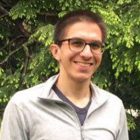
Toros Arikan
Nuclear Science and Engineering https://engineering.mit.edu/fellows/toros-arikan/Maanasa Bhat is a PhD candidate who is integrating interests in health, energy, and materials science to develop innovative new approaches to synthesis of nanomaterials. As a MathWorks Fellow, Maanasa is designing a flame-based synthesis process to manufacture nanomaterials for low-cost sensors and photocatalysts with a wide range of potential environmental and health applications. The goal of Maanasa’s work is to build a broader understanding of the physical and chemical mechanisms involved in the flame synthesis process. The aim is to strengthen connections between the input operating conditions and the composition and morphology of output products to achieve high controllability. MathWorks tools have been indispensable in this research. As her project progresses, Maanasa hopes to tailor the novel flame synthesis process she has developed for specific uses such as the detection of methane leaks, pollutant emissions in air, as well as breath diagnosis for hard-to-detect conditions such as endometriosis and fibroids.
https://engineering.mit.edu/wp-content/uploads/2023/02/Bhat-Maanasa_MechE_MathWorks-2022.jpg
Website
Maanasa Bhat
Mechanical Engineering https://engineering.mit.edu/fellows/maanasa-bhat/Harsh G. Bhundiya is a PhD candidate who is applying structural engineering, computational modeling, and design techniques to purse his interest in space structures. His work is ushering in a new paradigm for constructing large structures in orbit, called in-space manufacturing, with an enormous potential impact on space applications. Drawing on MathWorks tools, Harsh has reached exciting milestones, including the development of a path-planning framework called Bend-Forming, which enables the creation of paraboloids, isogrid columns, and other structural elements that can be linked together to form large structures such as RF reflectors and solar sails. As a MathWorks Fellow, Harsh will characterize the compression behaviors of these structures and study the effects of processing defects on their buckling response through experiments and nonlinear finite element analysis. Simulink and Simscape Multibody will play critical roles in this work. Harsh was pleased to share previous work on MathWorks File Exchange, and will continue to share his research, as he seeks to create a new generation of large space structures for diverse applications.
https://engineering.mit.edu/wp-content/uploads/2023/02/Bhundiya-Harsh_MathWorks-2022.jpg
Website
Harsh G. Bhundiya
Aeronautics and Astronautics https://engineering.mit.edu/fellows/harsh-g-bhundiya/Peng Cao is a PhD candidate who has demonstrated innovative use of MathWorks tools to make fundamental contributions to machine learning and digital health. Specifically, Peng’s research focuses on sensing systems, data analysis, and radio signals. MATLAB is an essential tool in this work, for numerical optimization, complex signal processing, and analysis and manipulation of radio signals and electromagnetic fields. The MathWorks Fellowship will support Peng’s cutting-edge research in several domains. She has developed new approaches to learning from crowdsourcing labels, including robust information-theoretic loss functions that enable learning from multiple labels and noisy labels, as well as semi-supervised, multimodal learning. Peng has also made notable advances in human-motion modeling with a transformer-based deep learning model for generative modeling of 3-D human motion. Another project yielded a new approach to enable robots to move quickly in indoor environments without colliding with people—one of the first such projects to demonstrate indoor localization around corners using radio signals. Most recently, Peng developed the first contactless system to monitor blood oxygen by employing a neural network to assess oxygen levels within 2 to 3 degrees. This work, which was validated with Covid-19 patients, has enormous potential for telehealth applications.
https://engineering.mit.edu/wp-content/uploads/2023/02/Cao-Peng_Mathworks-2022.jpg
Website
Peng Cao
Electrical Engineering and Computer Science https://engineering.mit.edu/fellows/peng-cao/Yifan (Henry) Cao is a PhD candidate working at the frontier of a new materials science field: high- entropy alloys (HEAs). HEAs offer valuable traits, such as high strength and fracture resistance. As a MathWorks Fellow, Henry will be expanding a new method he has developed to optimize machine learning interatomic potentials (MLP) in cross-scale atomistic simulations, thereby predicting HEA
properties with greater efficiency than current methods. Although HEAs are created by mixing many chemical elements, local chemical ordering (LCO), the prominent mechanism underlying many of these properties, remains poorly understood. Henry’s research seeks to close that knowledge gap. Two MathWorks tools will play a central role in the project: Simulink, which will enable the development of a well-rounded MLP training set, and MATLAB, which will be used to extract physically important features and plot relevant data obtained from HEA cross-scale simulations. Henry also plans to explore potential applications of these tools in mesoscale, atomic, and quantum mechanics modeling approaches.
https://engineering.mit.edu/wp-content/uploads/2023/02/Cao-Yifan_Mathworks-2022.jpg
Website
Yifan (Henry) Cao
Materials Science and Engineering https://engineering.mit.edu/fellows/yifan-henry-cao/Florian Chavagnat is a PhD candidate whose research sits at the boundary of applied physics and computational methods. Specifically, he is developing physics-based models that represent the complex nature of boiling heat transfer with the objective of supporting NASA’s potential moon and Mars explorations. As a MathWorks Fellow, Florian will advance his cutting-edge study of the management and transfer of cryogenic fuel. His achievements include: the development of a novel method to deliver experimental diagnostics for cryogenic boiling; a low-cost approach to demonstrate the applicability of boiling diagnostics; and the creation of a flight-ready apparatus to study the influence of reduced gravity on microscale boiling parameters. MATLAB is central to Florian’s research, enabling him to postprocess and analyze data and optimize the formulation of the constitutive relations using the Curve Fitting Toolbox, Global Optimization Toolbox, and Statistics and Machine Learning Toolbox. In addition to providing NASA with a first generation of closure models, Florian’s ongoing research is generating new data in a broad range of conditions and advancing the fundamental understanding of the boiling mechanism.
https://engineering.mit.edu/wp-content/uploads/2023/02/Chavagnat-Florian_MathWorks-2022.jpg
Website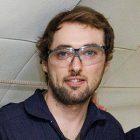
Florian Chavagnat
Nuclear Science and Engineering https://engineering.mit.edu/fellows/florian-chavagnat/Justin Chen is a PhD candidate whose research explores the intersection of algorithms, machine learning, and data analysis. Specifically, Justin is making important contributions in the emerging area of learning-augmented algorithms. As a MathWorks Fellow, Justin will build upon several recent projects in this domain, including research on counting triangles in a data stream (a fundamental tool of network analytics); the classic optimization problem of online bipartite matching; and offline algorithms for fundamental graph problems. His interests also include new applications of algorithms for data science problems. In these and other projects, Justin is making innovative use of MATLAB to develop powerful new algorithms that improve speed and efficiency, with possible applications spanning from Google’s ad market to the kidney exchange program. His work has also yielded broader benefits, such as a new framework of reductions for learning-based algorithms and major progress in an open question posed by Sealfon (related to differentially private computation of shortest graph paths) that enhances his own work and holds the potential to advance many paths of discovery.
https://engineering.mit.edu/wp-content/uploads/2023/02/Chen-Justin_MathWorks-2022.jpg
Website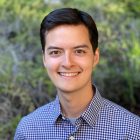
Justin Chen
Electrical Engineering and Computer Science https://engineering.mit.edu/fellows/justin-chen/Jaehun Choe is a PhD candidate whose research bridges the fields of materials science, mechanics, and robotics to advance cutting-edge medical robotics applications. As a MathWorks Fellow, Jaehun is developing a guidewire robot capable of navigating blood vessels in the brain to treat stroke patients remotely and to deliver life-saving care faster. His project builds on recent advances in soft, thread-like robots made of ferromagnetic material that can navigate a life- sized model of vasculature with the enhanced mobility required for endovascular surgery. Using MathWorks tools like MATLAB and Simulink, Jaehun is developing a semi-autonomous control system that uses 3-D positional data of vessels to calculate the directions of desired branches, and suggests optimal position and orientation of the robot. His goal is to develop a fully autonomous system, and to share custom MATLAB codes underlying his system. Jaehun’s research is yielding important contributions to medical robotics research and has the potential to bring life-saving treatment to millions of stroke victims.
https://engineering.mit.edu/wp-content/uploads/2023/02/Choe-Jaehun_MechE_MathWorks-2022.jpg
Website
Jaehun Choe
Mechanical Engineering https://engineering.mit.edu/fellows/jaehun-choe/Benjamin Dacus is a PhD candidate who is exploring how various materials respond in a fusion reactor environment at micro and macro levels. The goal of his work is to identify or fabricate materials well-suited to hostile conditions, from currently available metals to state-of-the-art radiation tolerant materials. With the support of a MathWorks Fellowship, Ben will expand his contributions to a world-first in situ ion irradiation transient grating spectroscopy (I3TGS) sys- tem. MATLAB-based analysis tools—deployed and/or created by Ben—play a fundamental role in the I3TGS system. This includes non-linear fitting and curve-fitting capabilities, enabling data acquisition one million times faster than previous capabilities, with one thousand times the data throughput rate. This tool led to key observations and discoveries, including the precipitation of radiation-induced secondary phases as they grow on the macroscale. His next goal is to augment the I3TGS system to replicate the conditions of the first commercial fusion power reactors. By integrating cutting-edge hardware with powerful MATLAB tools, Ben’s research provides a valuable new technique to test and develop materials in a wide range of hostile environments and conditions.
https://engineering.mit.edu/wp-content/uploads/2023/02/Dacus-Benjamin_Mathworks-2022.jpg
Website
Benjamin Dacus
Nuclear Science and Engineering https://engineering.mit.edu/fellows/benjamin-dacus/Rishabh Datta is a PhD candidate whose research is focused on magnetized plasma, a quasi- neutral gas of ions and electrons threaded by magnetic fields that makes up the vast majority of the universe. Specifically, Rishabh seeks to gain a deeper understanding of the fundamental properties of magnetized plasma, knowledge that has important implications for satellites, spacecraft, and other technologies in communication, security, and space exploration. With the support of a MathWorks Fellowship, Rishabh will study the role of strong radiative cooling in plasma shocks and magnetic reconnection via state-of-the-art laboratory and numerical studies, including work at Sandia National Laboratory’s Z pulsed power facility. His project, which draws extensively on existing and custom-built MATLAB tools, combines cutting-edge plasma theory, simulation, and experiments to design new experimental platforms, advanced X-ray and magnetic diagnostics, and high-fidelity numerical simulations on high-performance supercomputing facilities. Rishabh is collaborating with some of the world’s leading plasma physicists and has produced the first direct observations of reconnection and plasma shocks in a strongly radiatively cooled and magnetized plasma—a vital step in understanding and modeling spacecraft interactions in these astrophysical environments.
https://engineering.mit.edu/wp-content/uploads/2023/02/Datta-Rishabh_MechE_MathWorks-2022.jpg
Website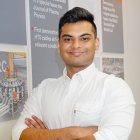
Rishabh Datta
Mechanical Engineering https://engineering.mit.edu/fellows/rishabh-datta/Ippolyti Dellatolas is a PhD candidate whose research explores multiphase materials composed of constituents of different phases, which have widespread applications in industry, bioengineering, and geophysical flows. Ippolyti’s current work includes an experimental and computational study of the mechanical properties of filler-reinforced hydrogels. The goal of the project is to gain insights into the physical mechanism of reinforcement to guide the design of filler-hydrogel composites with improved mechanical properties and tunable functionalities. A Mathworks Fellowship will enable Ippolyti to expand on this promising research, as well as pursue a second project that investigates the preferential flow pathways that can form as water infiltrates a soil. Such non-uniform water penetration has been linked to an increased occurrence of landslides following heavy rainfall events and earthquakes. Her model system of sand grains with highly controllable hydrophobicity could lead to improved engineering designs with significant impact in geoscience and environmental science. MATLAB is an essential tool in Ippolyti’s research, enabling her to link the microstructure and dynamics of complex multiphase systems to their macroscopic properties.
https://engineering.mit.edu/wp-content/uploads/2023/02/Dellatolas-Ippolyti_MechE_MathWorks-2022.jpg
Website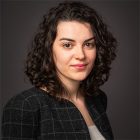
Ippolyti Dellatolas
Mechanical Engineering https://engineering.mit.edu/fellows/ippolyti-dellatolas/Somayajulu (Somu) Dhulipala is a PhD candidate in the field of solid mechanics whose research explores experimental and computational aspects of self-assembled, architected materials. As a MathWorks Fellow, Somu is developing non-periodic self-architected metamaterials with tuneable mechanical properties, which have the potential to offer significant advantages over conventional additive manufactured architected materials, including greater strength and improved scalability. Somu has developed a computational framework to generate anisotropic spinodoid morphologies with spatially varying curvatures and is working on a theory to explain the relationship between curvature distribution and observed anisotropic mechanical properties in nano-labyrinthine structures. To support his research and that of colleagues, Somu has led the creation of a library of shared MATLAB tools, including scripts that transform complex and large experimental datasets into 3-D models ready for finite element analysis.
https://engineering.mit.edu/wp-content/uploads/2023/02/Dhulipala-Somayajulu_MechE_MathWorks-2022.jpg
Website
Somayajulu (Somu) Dhulipala
Mechanical Engineering https://engineering.mit.edu/fellows/somayajulu-somu-dhulipala/Tom Dillon is a PhD candidate whose research combines robotics, mechatronics, and medical- imaging to develop computer-assisted and robotic surgical techniques that optimize the treatment of cardiac and endovascular diseases. During a previous MathWorks Fellowship, Tom led the development of FenFit, a computational program for automating the design of patient-specific endovascular grafts for aneurysm surgery, now in clinical testing. With the support of his second MathWorks Fellowship, Tom is creating an innovative technology called AortaSLAM (simultaneous localization and mapping), a novel imaging platform for precise 3-D ultrasound mapping and catheter localization within intravascular environments, which can reduce the risk of intraoperative complications while also removing the harmful effects that ionizing radiation pose to the surgeon. The goal of the project is to develop an automated robotic system for endovascular surgery with integrated vision and interventional capabilities. MATLAB is an essential tool for modeling, image analysis, and interface design. Tom’s research is generating new technologies that serve important clinical needs and improve patient outcomes in vascular surgery and have the potential to significantly advance computer- and robot-assisted medicine.
https://engineering.mit.edu/wp-content/uploads/2023/02/Dillon-Tom_MechE_MathWorks-2022.jpg
Website
Tom Dillon
Mechanical Engineering https://engineering.mit.edu/fellows/tom-dillon/Manan Doshi is a PhD candidate whose research applies computational science approaches to challenges in ocean and mechanical engineering. Specifically, Manan’s work explores optimal path planning in dynamic ocean environments, Lagrangian analysis of ocean flow, and Lagrangian data assimilation and learning. Manan’s prior work has yielded significant contributions to the field, most notably his discovery of equations governing the optimal collection-time reachability and path planning for vehicles in dynamic environments. With the support of a MathWorks Fellowship, Manan will continue developing theory, algorithms, and computational systems for the high dimensional optimal path planning of autonomous vehicles, with the goal of enabling sustained and optimal operation of these vehicles over long durations in realistic, uncertain ocean settings. MATLAB tools form an integral part of this work. Manan’s research has the potential to advance important global conservation strategies through the use of autonomous vehicles. These potential applications include collection of marine algae for food and carbon sequestration, clean-up of ocean plastics, operation of dynamic aquaculture farms, and the avoidance of sea ice and other dangerous dynamic regions.
https://engineering.mit.edu/wp-content/uploads/2023/02/doshi-web.jpg
Website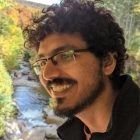
Manan Doshi
Mechanical Engineering https://engineering.mit.edu/fellows/manan-doshi/Griffin Drake is a PhD candidate who studies the chemistry underlying plastic deconstruction to develop new catalytic strategies that depolymerize waste plastics and chemically “upcycle” these materials. This work is important to meeting the goals of decarbonizing our energy sector and building sustainable solutions for the chemicals industry. As a MathWorks Fellow, Griffin will expand his investigations of polyolefins, a class of plastics with desirable material properties that are highly resistant to degradation. His primary goal is to create a new method of polyolefin deconstruction via hydrogenolysis through interconnected experimental kinetic measurements and kinetic Monte Carlo (kMC) reaction network modeling. His kMC model, developed in MATLAB, enables him to simulate polymer deconstruction. Aspects of his kMC model may be generalizable to a wide variety of depolymerization chemistries, providing a toolbox for both academic and practical treatments of deconstruction systems. Overall, Griffin’s work could offer important insights that help to address energy and manufacturing needs and the growing environmental and economic challenges of plastic waste.
https://engineering.mit.edu/wp-content/uploads/2023/02/Drake-Griffin_ChemE_MathWorks-2022.jpg
Website
Griffin Drake
Chemical Engineering https://engineering.mit.edu/fellows/griffin-drake/Souha El Mousadik is a PhD candidate whose research explores the characteristics and hydrodynamics of deep seabed sediment with particular focus on the sediment plumes generated by deep-sea mining. As the demand for mineral resources from seabed mining continues to increase, Souha’s work provides critical new knowledge and tools that can further our understanding of its environmental impacts and inform regulations. Through her MathWorks Fellowship, Souha is developing ground-breaking instrumentation to characterize suspended sediment properties in-situ at abyssal depths of over 6000m. In field trials, the sensor enabled in situ monitoring of sediment properties at 4500m. Souha is advancing the sensor to measure both particle size distribution and settling velocity distribution. MATLAB tools, including the Image Processing Toolbox and PIVlab, have been foundational to this work. Going forward, Souha will utilize MATLAB to develop new particle tracking tools and on-board data analysis scripts for up- coming sea trials. In addition to its potential to inform deep-sea mining, Souha’s work holds the promise of shining light on other areas of abyssal ocean science, including studies of microscopic life, microplastics, and particulate organic carbon for innovation in ocean carbon capture technology.
https://engineering.mit.edu/wp-content/uploads/2023/02/El-Mousadik-Souha_Mathworks-2022.jpg
Website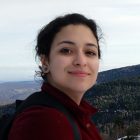
Souha El Mousadik
Civil and Environmental Engineering https://engineering.mit.edu/fellows/souha-el-mousadik/Amelia Gagnon is a PhD candidate whose research applies cutting-edge instrumentation applications in the creation of new satellite systems and human systems for space exploration. Specifically, her current research is focused on advancing the ability of humans to live and work in space long-term by improving the instruments they use. Her previous research endeavors include advancing satellite maneuver planning, the calibration and validation of instrumentation payloads, and valuable contributions to NASA-supported work on CubeSat constellations that will further the understanding of the lifetimes of storms and tropical cyclones. Amelia’s past work and upcoming projects rely extensively on creative applications of MATLAB. As a MathWorks Fellow, she will develop new technologies utilizing functional near-infrared spectroscopy to support human (astronaut) health, devising new methods for noninvasively gathering information on the brain. This technology has many potential applications, from lightweight wearable devices to monitor astronauts’ brain activity, to minimally invasive, remote monitoring for patients on Earth, and safety enhancing self-monitoring of brain alertness for drivers.
https://engineering.mit.edu/wp-content/uploads/2023/02/Gagnon_Amelia_MathWorks-2022.jpg
Website
Amelia Gagnon
Aeronautics and Astronautics https://engineering.mit.edu/fellows/amelia-gagnon/Weiran (Sasha) Gao is a PhD candidate whose research focuses on the development of electrical power systems that can meet emerging energy demands while balancing environmental and economic concerns. Specifically, Sasha’s research—supported by a MathWorks Fellowship—seeks to advance a novel format for lithium-ion batteries, called the “convection battery” in which electrolyte is circulated through a cell with porous solid electrodes and a separator to overcome the mass and thermal transport limitations. To accomplish this, Sasha has developed a model building upon MATLAB’s LIONSIMBA, called LIONSIMBA+c, which enables Sasha and other researchers to study dynamic behavior of the convection battery over a broad range of conditions. Sasha’s research has yielded key findings that may improve convection battery capabilities for a wide variety of current and emerging applications, including electric grid storage and even electric flight. In addition to advancing Sasha’s work to improve convection battery performance, the LIONSIMBA+c model is a useful tool for understanding the interplay between transport and reaction kinetics, which is beneficial for both educational and research purposes.
https://engineering.mit.edu/wp-content/uploads/2023/02/Gao-Weiran_ChemE_MathWorks-2022.jpg
Website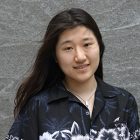
Weiran (Sasha) Gao
Chemical Engineering https://engineering.mit.edu/fellows/weiran-sasha-gao/Indie Garwood is a PhD candidate whose interdisciplinary research lies at the intersection of neuroscience, signal processing, and technology development. Her current work centers on ketamine, a drug used to produce altered states of consciousness and analgesia, which has recently been shown to be a highly effective treatment for chronic depression and seizures. Through her MathWorks Fellowship, Indie will advance MATLAB neural data analysis methods to investigate the mechanisms underlying altered consciousness. Specifically, she will use fiber- based neurotechnology in non-human primates to study the mechanisms behind altered brain states during ketamine anesthesia. Through prior work drawing on MATLAB, Indie has already made important contributions to neural signal processing and neurotechnology development and set the stage for her current research. She will be testing the hypothesis that increased cortical acetylcholine release caused by ketamine facilitates cortical disinhibition, which manifests as bursts of high frequency neural activity during ketamine anesthesia. This research, in combination with Indie’s past innovations, is leading the way to significant new insights into the neuroscience of ketamine and cortical function.
https://engineering.mit.edu/wp-content/uploads/Indie-Garwood.jpg
Website